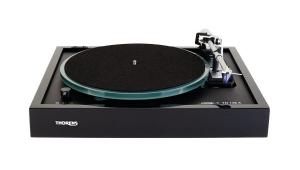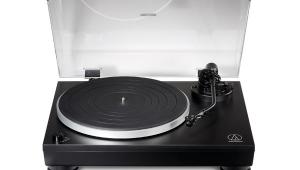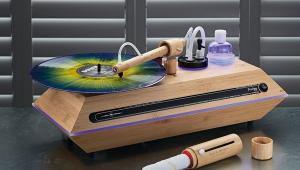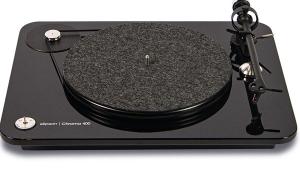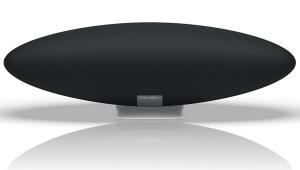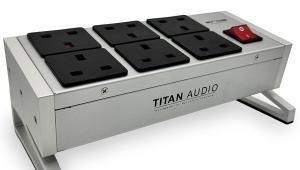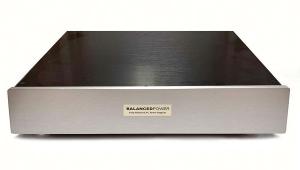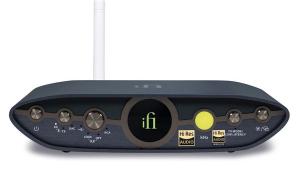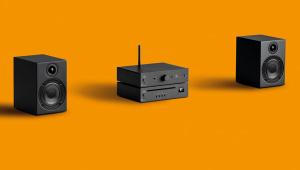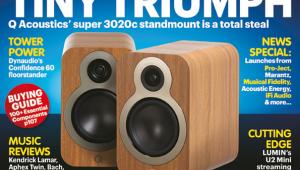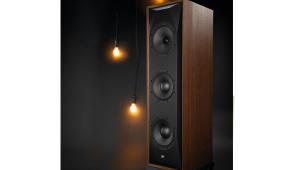Edwards Audio TT4

 Back in 2003, US car maker General Motors decided to take on a couple of Europe’s popular prestige brands in the performance executive saloon sector. As presented to the UK press, the Cadillac CTS – hot from a mind-bending car chase in the Matrix Reloaded film of the same year – was designed to appeal to the kind of driver prepared to swerve the habitual acceptance of the Teutonic hegemony for a more discerning, individualistic choice. The reasoning went that, everything else being more-or-less equal, the Cadillac would be bought because it wasn’t a Beemer or a Merc. Although the CTS was a good car, forcing BMW and Mercedes on to the back foot was never going to happen. And it didn’t.
Back in 2003, US car maker General Motors decided to take on a couple of Europe’s popular prestige brands in the performance executive saloon sector. As presented to the UK press, the Cadillac CTS – hot from a mind-bending car chase in the Matrix Reloaded film of the same year – was designed to appeal to the kind of driver prepared to swerve the habitual acceptance of the Teutonic hegemony for a more discerning, individualistic choice. The reasoning went that, everything else being more-or-less equal, the Cadillac would be bought because it wasn’t a Beemer or a Merc. Although the CTS was a good car, forcing BMW and Mercedes on to the back foot was never going to happen. And it didn’t.
I can’t help thinking there’s a commensurate challenge facing Edwards Audio’s TT4. Arguably the toughest ask in the vinyl spinner retail arena is to sell a turntable for around £400 that isn’t a Rega Planar 2 or a Pro-Ject Debut Carbon Evo. Hats off to Edwards Audio, then, because that’s exactly what it’s expecting to do here. Unlike the ill-starred Caddy, however, this is a product capable of stress testing its estimable opponents with some tantalising tech and points of difference more usually found at considerably loftier prices.
Perhaps most obvious, it simply looks more expensive than it is, rocking an aesthetic arguably closer to that of the extraordinary Vertere DG-1 (HFC 463) than anything from Rega or Pro-Ject at remotely close to the price. One similarity is that both turntables’ use of a layered construction, sometimes referred to as constrained layer damping, for their elegantly svelte plinths – a vibration-damping sandwich with the translucent filling on show. Also like the Vertere, the Edwards has a tonearm that eschews the gimbal bearing assemblies common to the vast majority of tonearms in search of lower friction values. All right, the acrylic platter is more Planar 2, but on the whole the TT4 offers some fresh thinking and so is a genuine alternative to the usual suspects. Maybe to emphasise the point, the Z-shaped dust cover that slips over the spindle and rests on the platter is a departure from the hinged-lid norm.
A technology with oft-mentioned aerospace associations, ‘constrained layer damping’ is the new buzz term among turntable makers. This type of sandwich construction can be discreetly hidden, as in the case of the MoFi UltraDeck+ and StudioDeck+ (HFC 459/466) or left exposed like the TT4. In either case, the objective is to dissipate fractional vibrations and noise that would otherwise degrade sound quality. Edwards Audio sees it as a key factor in its endeavour to deliver superior sonics at this price point.
Another is its captive uni-pivot tonearm, which effectively makes its debut as the A4 on the TT4, but will also be sold as the A500 to fit to other turntables complete with 5-pin socket added to the bottom of the arm and a special VTA mounting ring. A brief word about uni-pivots. Notables over the years have included the Naim ARO and Roksan Nima, both unconstrained examples free to move not just in the vertical and horizontal planes but wobble torsionally as well, the latter characteristic sharply dividing opinion along swear by/swear at lines.
A captive (or constrained) uni-pivot gets around the – for some – disconcerting wobble by confining movement to the vertical and horizontal planes, just like a conventional tonearm. There are various methods employed to achieve this, but Edwards Audio’s claims to be uniquely simple and positions a plastic (POM or acrylic) ring at the base of the bell housing. The ring has a slot in it that locates against the vertical pivot point to prevent movement other than in the vertical or horizontal planes. If you remove the ring, says boss Kevin Edwards, it reverts to being a full uni-pivot, with all the issues that brings.
The design has a hardened stainless steel pivot point and uses a 12.7mm diameter, high-grade and slightly tapered aluminium arm tube internally dressed with jointless 0.15mm copper single-core varnished copper wire and terminated with a fully machined black acrylic headshell. This is factory fitted with a pre-aligned Audio-Technica AT95E moving-magnet cartridge (re-badged C100).
Three large non-adjustable, anti-vibration feet are fixed directly to the underside of the plinth and provide a reassuringly firm footing while the interconnect socket/earth terminal block, although slightly inset from the rear edge, is easy enough to access – as is the power socket for the wall-wart mains plug. Supplied for test in a very smart glossy white finish (including Z-type dust cover), the TT4 is also available in black, red and grey. Build quality is excellent throughout and, again, would not disgrace a significantly more expensive product.
Sound quality
Talk Electronics, Edwards Audio’s parent company, has invested heavily in machining facilities for its Surrey-based factory and is as proud to thump the ‘made in Britain’ tub as it is willing to take the Pepsi Challenge with any competitor on the matter of which sounds better? Running with the theme, the TT4 is, if anything, a still punchier prospect itching to chop down some popular big hitters – as it needs to be, of course, as counting on patronage solely because it isn’t a Rega or a Pro-Ject ain’t gonna work.
Unfortunately, I don’t have the slightly more expensive Rega Planer 2 and Pro-Ject Debut Carbon Evo to hand for comparison, but by pitching the TT4 against the considerably more expensive Rega Planar 6 (HFC 427) with Ania moving-coil cartridge (HFC 452) and Neo PSU as well as MoFi’s terrific StudioDeck +, we should get a reasonable idea how that contest might have turned out.
Exposing the TT4 to the revealing insights of Chord’s Huei phono stage (HFC 459), Hegel’s H120 integrated (HFC 460) and Dynaudio’s Evoke 30 floorstander (HFC 460) uncovers no fundamental flaws. On the contrary, the TT4 is a quiet performer: zero hum, barely detectable surface noise, no woofer flutter and, even with a decades’ old pressing of The Oscar Peterson Trio’s Hello Herbie, vanishing low instances of ‘groove rush’.
Actually, Peterson’s phenomenal speed, technique and mixing of styles on piano, joined by a similarly spry Herb Ellis on guitar, Sam Jones’ supple bass stylings and Bob Durham’s deft dexterity with a drum kit, is a great test for sifting the hi-fi pretenders from the real practitioners and, with all three decks having hosted the album’s fully lit opening track, Wes Montgomery’s Naptown Blues, the TT4 is clearly on the pace, in control and firmly a member of the latter camp along with the Planar 6 and MoFi – if not killing any giants, then at least holding its own.
I’ve come to notice when a turntable is getting the important things right if it can make Audio-Technica’s humble and often underrated classic budget MM cartridge, the AT95E, sing sweetly. And the TT4 does that – no rough edges at all. Moreover, the combo is refined in a broader sense. All right, it doesn’t have the precision, openness and ultimate resolving power of the Rega or the tonal richness, body and ‘soul’ and lyrical flow of the MoFi, but my word it doesn’t fall that far short and, more importantly, the presentation has an exquisite order, coherence and balance that never grates or fails to find the musical pulse, whatever you play. From Leonard Cohen to The Clash, you will be engaged and uplifted. Um, probably depressed in Cohen’s case.
Conclusion
So, what of the notional TT4 versus Planar 2 versus Debut Carbon Evo match-up? A potential slam dunk for Edwards Audio’s talented newbie? In the absence of its actual price zone rivals, that must remain moot. But I am inclined towards a definite maybe. Measured against its supposed betters, it’s clear the TT4 has an awful lot going for it, not least that ever-desirable fusion of seductive style and transcendent sonic chops. I’d simply say this: don’t buy a £400 turntable without auditioning the TT4 first. DV
DETAILS
Product: Edwards Audio TT4
Type: Belt-drive turntable
FEATURES
● 33 and 45rpm
● 9in aluminium captive uni-pivot tonearm
● Zephyr C100 (AT95E) MM cartridge
 |
Inside this month's issue:
Ruark R610 music system and Sabre-R standmount speakers, PMC twenty.23i Active, floorstanders, English Acoustics Downton preamplifier, Bluesound NODE ICON preamp/streamer, Ortofon Concorde Music Blue MM cartridge and much, much more
|






